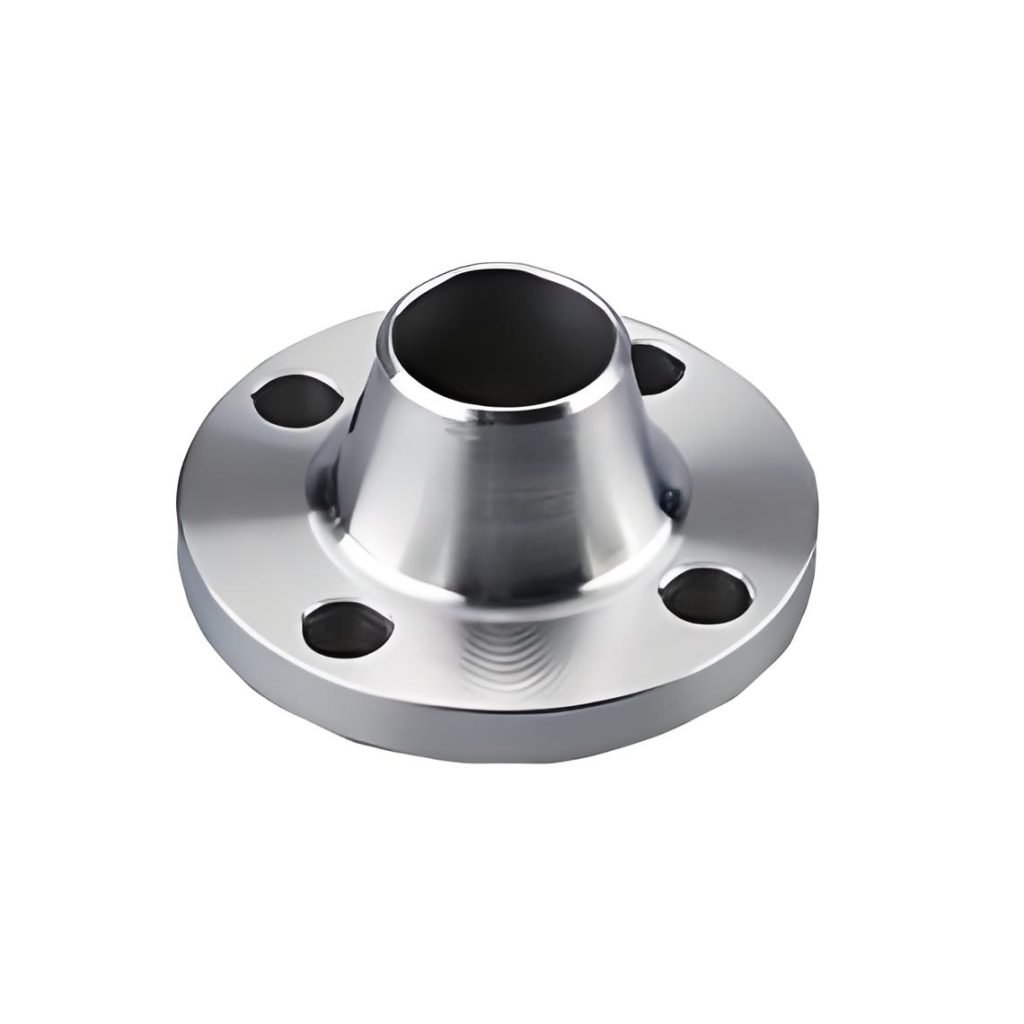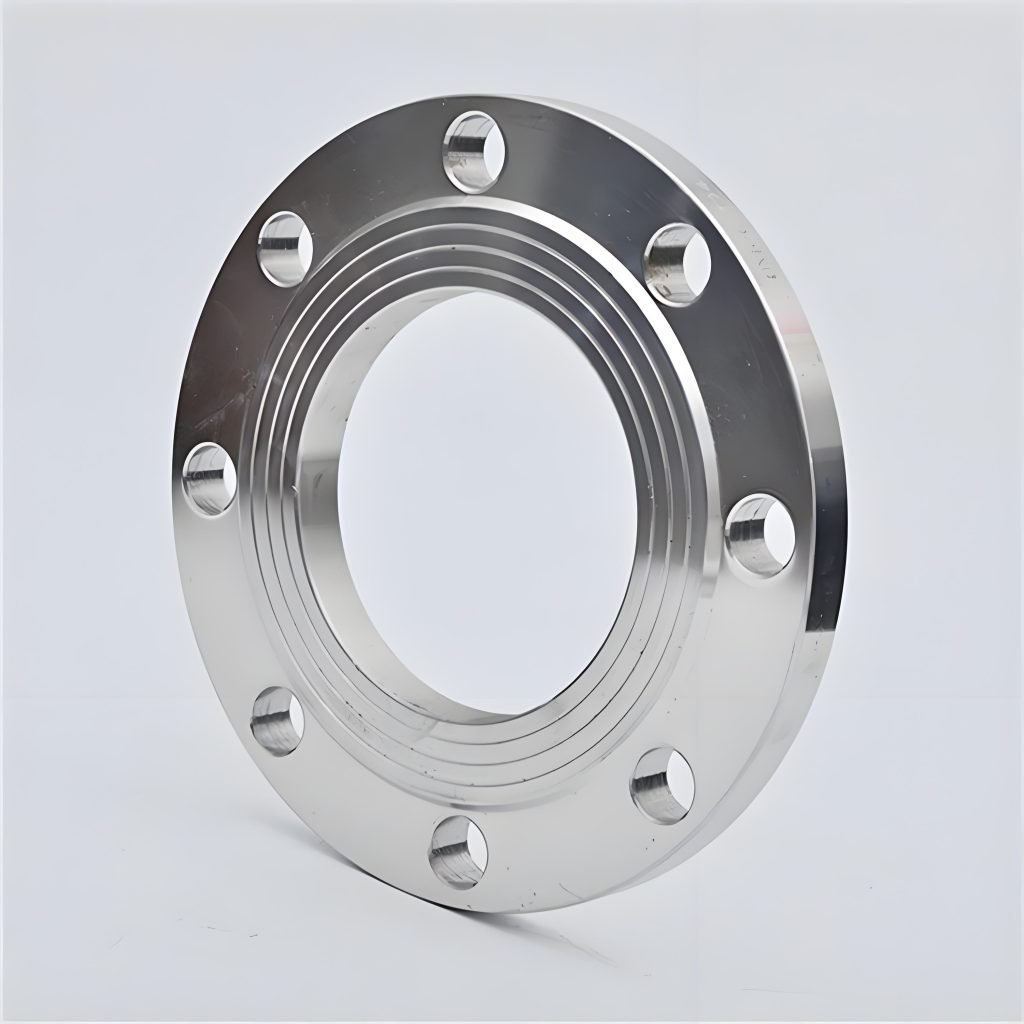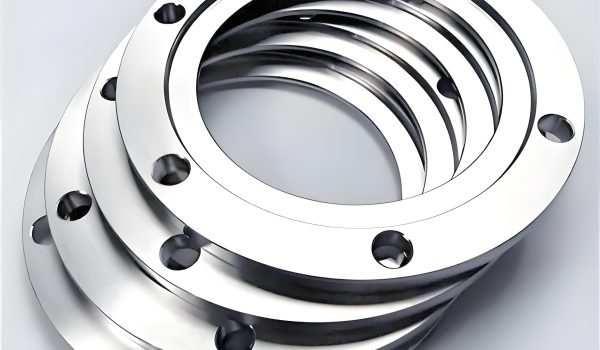What Is a Flange?
A flange is an annular flange connector with bolt holes and sealing surfaces. It is used to achieve detachable sealing connections between pipes, valves, pumps or other equipment by fastening with bolts and working with gaskets. Its core function is to ensure system sealing and structural stability under high-pressure and high-temperature conditions.
Weld neck flanges and slip-on flange types are commonly used in mechanical industry applications. Choosing between weld neck flange vs slip on is determined by pressure requirements, temperature conditions, ease of installation, and the associated costs. The latest guide provides information on the key differences between slip on flange vs weld neck flange, plus when to use each type.
What Is a Weld Neck Flange?
A weld neck flange refers to a circular fitting featuring a circumferential flange, which is drilled with a row of holes to enable bolts to fasten it to another flange. It has a long, tapered neck and is designed for weld neck flange welding to the pipe, thus forming a secure and leak-proof connection.
As a result of their high strength, rigidity, and pressure resistance, they are superior to the other kinds in the applications for oil, gas, petrochemicals, and chemical processing industries—areas where weld neck flange vs slip on flange considerations often prioritize durability.
Key Features of Weld Neck Flanges
Tapered Hub
Has a long, tapered hub, making a butt weld connection directly onto the pipe.
High-Strength Connection
The weld is tough, durable and of continuous strength, as it can resist a good amount of force.
Smooth Flow Characteristics
The design provides an optimal smooth transition to the fluid flow, minimizing both turbulence and corrosion.
Durable Material Options
Made of types including carbon steel and stainless steel for corrosive resistance requirements.
Advantages of Weld Neck Flanges
- High Strength and Durability: Designed with taper-style ends, along with a solid weld, makes it appropriate for applications under high-pressure and high-stress conditions, critical in slip on flange vs weld neck evaluations.
- Superior Sealing: Ensures better seal ability and lower sealing leakage risks in vital systems.
- Low Stress Concentration: The tapered end transition gets rid of the stress concentration problem, and increases the working life of the pipe system.
- Excellent Stability: No deformation or melting at high temperatures and pressures.
- Longer Life Span: Designed for robust applications such as oil and gas pipelines or chemical plants.
Disadvantages of Weld Neck Flanges
- High Cost: More expensive than other flange types.
- Bulky and Weighty: Design makes a large and heavy component.
- Complex Installation: Butt welding and concentric alignment demand highly skilled labor and elongate the installation time, with expanded complexity.
- Difficult to Disassemble and Repair: Unlike other flange types, a manual damper serves as a permanent weld that makes it more difficult to disassemble and repair.
- Dilemma of Placement: Installation can be challenging in tight spaces.

What Is a Slip-on Flange?
A slip on flange is a kind of pipe flange that slides over the pipe before being welded in place, often with fillet wedging on both sides. Due to their low cost and ease of installation, these flanges are ideal for use in low- to medium-pressure applications. For that reason, you’ll regularly come across these flanges now in cooling water pipelines, fire water pipelines, and low-pressure compressed air pipelines.
Key Features of Slip-on Flanges
Easy to install
Slip-on flanges are fitted over the pipe, and the installation process is easy.
Lower Cost
They tend to be cheaper in terms of manufacture and purchase than weld neck flanges.
Double Fillet Welds
Welding with inner and outer fillets to fix on the pipe.
Tolerance in Alignment
Easier installation, adjusting, and alignment.
Advantages of Slip-on Flanges
- More pocket-friendly: Ideal for applications where price is the distinct factor and not high-pressure resistance.
- Fast Installation: Cuts down on time and hassle of a more involved flange style.
- Flexible: This can be used in many piping systems.
- For Low to Moderate Pressure: These work for low-to-moderate temperature and pressure applications.
Disadvantages of Slip-on Flanges
- Lower Strength: Weaker than weld neck flanges and may break down under high-pressure or high-temperature applications.
- More Welding Required: Double fillet welds—both inner and outer—are time-consuming to install, which can add cost for an additional pair of inspection eyes.
- Potential for Leaks: These types of sealing rings can leak more readily than any other kind of flange if not installed correctly or operated under very high stresses.
- Not for High-Stress Applications: In high-pressure or high-temperature and cyclic loading conditions, this is not recommended.
- Limited Size Availability: Not available at high-pressure ratings for all sizes.

Slip-On Flange vs Weld Neck Flange: Key Differences
Here are the key differences in the comparison of slip on flanges and weld neck flanges:
- Design and Connection
- Weld Neck: Features a distinctive long, tapered neck designed to be butt-welded directly to the pipe. This creates a robust, continuous structure.
- Slip-On:Slides over the pipe end. It’s secured with two fillet welds – one inside the flange collar and one outside.
- Strength and Pressure Handling
- Weld neck: The obvious winner for strength. Full penetration butt weld and Tapered hub designs evenly distribute the stress across all points, which makes these fittings perfect for high-pressure/temperature or cyclic loading applications like in oil/gas/chemical plants, etc.
- Slip-On: Provides lower strength due to fillet welds and no tapered hub. Well suited for low and medium pressure and temperature system applications (cooling water, firefighting lines, low-pressure air).
- Installation Complexity and Cost
- Weld Neck: It is difficult and more time-consuming to install. Initial costs are high since the butt weld requires exact alignment and skilled welders. They are more bulky and heavier as well. Permanent weld that makes disassembly/repair very difficult.
- Slip-On: Installation is very easy, and it will be done in no time. Alignment is simpler. Then take that ease and work out the initial installation costs, so labor reduction on site is huge as well.
- Performance and Longevity
- Weld Neck: The superior leak resistance, good flow configuration (low turbulence), significantly lower stress concentration, and very stable, regardless of low temperatures or high vibrations. This makes them sturdy enough to last longer on demanding applications.
- Slip-On: Slightly more prone to leaking if not installed properly or suddenly stressed. Such turbulence can develop within the weld itself. It is less durable under high stress and has a shorter life cycle in harsh environments.
- Cost Effectiveness
- Weld Neck: Higher upfront cost, but more cost-effective over the long term for high-stress systems due to its durability and reduced risk of failure/maintenance.
- Slip-On: Lower initial cost makes it highly cost-effective for budget-conscious projects or low-pressure systems where extreme strength isn’t critical.
Comparison Table:
| Feature | Slip-On Flange | Weld Neck Flange |
| Core Structure | Slides over the pipe | Long tapered neck butt-welded to pipe |
| Welding Required | Two fillet welds (inside & outside) | One full-penetration butt weld |
| Strength | Lower, fillet welds lack sufficient strength | Very high, strong butt weld |
| Pressure Tolerance | Low to Medium Pressure | High Pressure & Temperature |
| Leak Resistance | Good if installed correctly; more prone under stress | Superior, excellent sealing integrity |
| Installation Ease | Simple & Fast; easier alignment | Complex & Slow; precise alignment critical |
| Skill Requirement | Lower skill needed | Requires highly skilled welders |
| Cost | Lower | Higher |
| Long-Term Value | Cost-effective for low-pressure systems | Cost-effective for high-stress systems (durability) |
| Disassembly/Repair | Relatively Easier | Difficult (permanent weld) |
| Application | Water pipelines, low-pressure air, and budget projects | Oil/Gas pipelines, chemical plants, high-pressure steam, critical high-stress systems |
When to Use Weld Neck Flanges vs Slip-On Flanges
1. When to Use Weld Neck Flanges
Weld neck flanges are essential for high-stakes environments, where weld neck vs slip on flange considerations prioritize reliability:
- Pipelines subject to high pressure: required for those pipelines that operate under high pressures and need structural integrity.
- High temperature: Intended to survive in high-temperature, continuous duty situations.
- Transport of dangerous fluids: Especially valuable for hazardous materials (e.g., fuels, gasoline) to ensure there is no risk of spills but at a cost.
- Mandated mission-critical infrastructure: Typical in petrochemical plants and other facilities where a failure has dire consequences.
- Need for long-term durability: High upfront cost is justifiable, as their strong construction ensures they will handle vibration and pressure cycles better than alternatives.
2. When to Use Slip-On Flanges
Slip on vs weld neck flange: Slip-on flanges are comparatively the most basic ones for mundane purposes:
- Medium Working Conditions: Good for low-to-medium-pressure systems, e.g., water supply, HVAC, or compressed air;
- Economic Projects: Offer significant up-front savings for categorized non-critical and project-specific budget-sensitive jobs.
- Easier to install: Slip-on type installs faster than weld necks—can be easily slipped on the pipes with a simple fillet weld, reducing installation labor complexity.
- General Industrial Use: Good for common fluids (water, air, and certain mild chemicals) without severe thermal cycling.
- Criteria for Accessibility: Best whenever the need for easy or post-construction disassembly takes precedence over durability.
Summary: Which Flange to Use for Your Project?
Distinct features, advantages, and limitations define weld neck flanges versus slip-on flanges. Application-specificity is often what leads to one or the other. Weld neck flanges are used for high-performance and heavy-duty applications that require excellent strength, leak-free integrity, and long service life. Slip-on flanges are used with low-to-medium pressure systems where welding can be time-consuming and quick installation improves economy.
Why Partner with Fecision for Flange Machining?
Whether you require high-performance weld neck flanges or cost-effective slip-on flanges, proper machining is crucial for ensuring leak-proof connections and long-term durability. At Fecision, we specialize in high-precision CNC machining to manufacture flanges that meet strict industry standards. Our capabilities ensure:
- Prototype lead time is typically 1-5 business days, varying with part complexity, materials, machine availability, finishing needs, and volume.
- Standard tolerances are ±0.005inches (±0.127mm) to ±0.01inches (±0.254mm).
Precision tolerances reach ±0.0001inches (±0.0025mm).
Without a drawing, ISO2768 Medium applies.
- Sharp edges are softened and deburred by default during the machining process.
- General surface finishes reach Ra 12.5–1.6μm. Extra finishing options meet higher precision needs.
- Supports 2-axis, 3-axis, and 5-axis movement.
Contact us today for a quote on CNC-machined flanges tailored to your project requirements!




